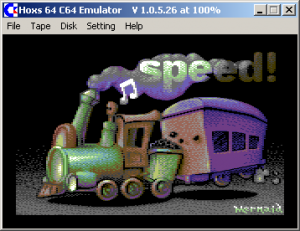 Hoxs64 is a Commodore 64 emulator for Microsoft Windows 2K/XP/Vista.
Hoxs64 is a Commodore 64 emulator for Microsoft Windows 2K/XP/Vista.
The emulator substantially reproduces this legacy machine in minute detail.
Changelog:
13 August 2009 v1.0.5.27
- Added general option to enable/disable opposing joystick directions.
- Speed optimisation to the CPU, CIA and VIC. The emulation is noticeable faster on lines with no DMA fetches and no IRQs.
- Bug fix to the reverse keyboard matrix. Was broken for years!
- Accurate emulation of the $DD00 VIC bank switch bug.
Unless something is majorly broken, the next release will include the long awaited debugger. Work on the debugger is now in progress.
source: hoxs64.net
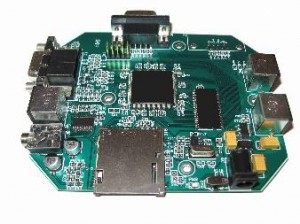 from Homepage:
from Homepage:
This Multiple Classic Computer Platform lets dreams come true.
The Classic Computer and Classic Arcade fans are just waiting for a device which allows them to go back to the good and easy operation and gaming experience from the past.
Many people still have unique software and programs which are still unbeatable when it comes to user friendliness. The reconfigurable and generic design will allow an easy switch between multiple different realizations and representations of classic computers.
When we look to the 80ies and 90ies, names like Atari ST, Sinclair’s ZX-Spectrum, Commodores VC20, VC-64 and the whole Amiga Series 500, 1000, 2000 come to mind.
main Features:
- Old Joystick interfaces allow the usage of classic input devices.
- A stereo/audio output allows the connection to each TV set, amplifier or computer monitor to explore enhanced sound.
- Different versions for PAL and NTSC regions allow seamless usage and compatibility.
- All this paired with the newest available hardware and new interface, like SD-Card, S-Video and RGB Output, improve the picture quality and the openness of the systems.
- An internal memory enables the permanent storage of favorite games and applications, the menu overlay allows for easy selection of the application or game and the desired Classic Computer.
source: arcaderetrogaming.com
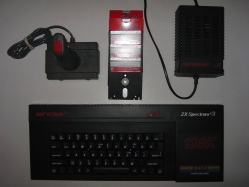
Autopsy:
from Wikipedia:
The ZX Spectrum +3 looked similar to the +2 but featured a built-in 3-inch floppy disk drive (like the Amstrad CPC 6128) instead of the tape drive, and was in a black case. It was launched in 1987, initially retailed for £249 and then later £199 and was the only Spectrum capable of running the CP/M operating system without additional hardware.
The +3 saw the addition of two more 16 KB ROMs. One was home to the second part of the reorganised 128 ROM and the other hosted the +3′s disk operating system. This was a modified version of Amstrad’s AMSDOS, called +3DOS. These two new 16 KB ROMs and the original two 16 KB ROMs were now physically implemented together as two 32 KB chips. To be able to run CP/M, which requires RAM at the bottom of the address space, the bank-switching was further improved, allowing the ROM to be paged out for another 16 KB of RAM.
Such core changes brought incompatibilities:
- Removal of several lines on the expansion bus edge connector (video, power, and IORQGE); caused many external devices problems; some such as the VTX5000 modem could be used via the “FixIt” device
- Dividing ROMCS into 2 lines, to disable both ROMs
- Reading a non-existent I/O port no longer returned the last attribute; caused some games such as Arkanoid to be unplayable
- Memory timing changes; some of the RAM banks were now contended causing high-speed colour-changing effects to fail
- The keypad scanning routines from the ROM were removed
- move 1 byte address in ROM
Some older 48K, and a few older 128K, games were incompatible with the machine.
The +3 was the final official model of the Spectrum to be manufactured, remaining in production until December 1990. Although still accounting for one third of all home computer sales in the UK at the time, production of the model was ceased by Amstrad at that point.
source: wikipedia divide homepage divide forum
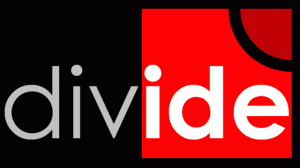
Autopsy:
from Divide homepage:
divIDE is an ATA (IDE) interface which takes your ZX Spectrum computing to a whole new level. As the time takes its toll on ageing media such as audio tapes or diskettes, many ZX Spectrum enthusiasts simply stick to emulation for better reliability and comfort.
With divIDE you can put your software collection to a hard disk, CD-ROM or even CompactFlash card and experience your favourite games, demos and utilities the way the were meant to be run – and even better. Using existing firmwares, many users find their Speccy box again a live platform – time for you to make the switch?
Features:
- divIDE uses full 16 bits of ATA bus.
- divIDE works on all ZX Spectrum flavours (16, 48, 48+, 128, +2, +2A, +3 and clones)
- Thanks to divIDE’s onboard logic, theoretical transfer speed is 218 KB/sec (determined by the latency of INI/OUTI instructions).
- divIDE has 8 KB of shadow flash ROM that hosts operating system core, leaving your original ZX Spectrum ROM intact. Additional 32 KB of RAM accessible as 8 KB memory banks are present.
- divIDE’s auto-mapping feature transparently maps shadow ROM at important entry points, enabling standard tape emulation, BASIC extensions, NMI menu and DISCiPLE/+D or BetaDisk emulation.
- divIDE’s MAPRAM feature helps developers and users to test new software without the need of reflashing their working system in shadow ROM. It can also emulate another 8 KB of ROM if necessary.
- divIDE works with all ATA-compatible devices (there are no known compatibility issues).
- Available software supports widely used emulator formats (TAP, SNA, Z80, SCR). Just download your all-time favourite games from the web and play!
source: divide homepage divide forum
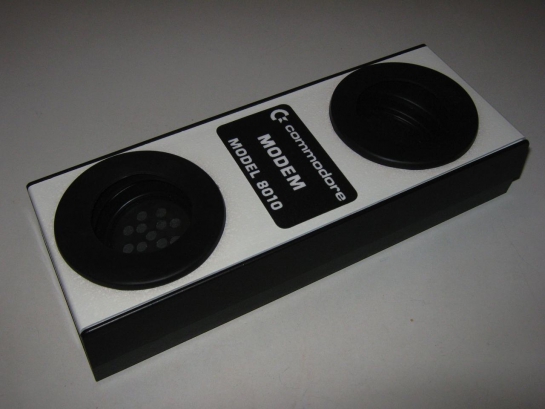
autopsy:
This is my first Modem, this is a Acoustic coupler modem for Commodore PET but i could use it with a IEEE488 Interface for the Commodore 64.
The Commodore’s 8010 Modem is an IEEE-488 (1978 standard) device which communicates via any standard telephone.
The 8010 Modem meets Bell 103 standards for communication at a fixed rate of 00 BAUD. The telephone interface is acoustic so the modem is portable. This means Commodore computers can communicate with, large computer systems like The Source and MICRONET, and other small computers.
Initially Commodore supplied software will support the following applications, with many more to come.
1) Terminal emulation.
2) Disk file send and receive.
3) Wordpro 3 sequential file send.
4) Hardcopy using Commodore printers.
5) Disk spooling.
A switchable four-section bandpass filter provides out-of-band rejection assuring accurate processing of the input from received carrier, even at signal levels of less than -47 dBm.
Jitter-free data is guaranteed by a soft limiter and phase lock loop discriminator. The carrier detect circuitry prevents the CBM Modem from operating when excessive noise would produce errors or cause marginal operation. This feature also assures accurate teleprocessing connections and inhibits chatter when the received signal fades.
from: Petscii Forums “PETSCII.COM”
I held off on announcing uIEC/SD availability until I had some stock (impatient folks, you know who you are , but I do now have some stock 90 units).
Since uIEC shares the same firmware (kudos to Ingo Korb, who does not get enough recognition for this fine piece of code) as the recently announced SD2IEC, I’ll spare everyone rehashing the similarities and just note the differences:
Features:
- uIEC/SD is currently the smallest known CBM drive (1.5″ x 1.5″ by 0.3″). Perfect for embedding in your favorite machine, drive, or calculator (shout out to Tone007, who stuffed one in a CBM pocket calculator)
- uIEC/SD shares the same 128kB Atmel AVR 8-bit microcontroller as the rest of the uIEC line. With 51kB used for firmware, there’s plenty of room left for the future.
- uIEC/SD comes complete for use with IEC connector and power supply cassette port connector. VIC/64/C128 users can simply plug the wires in and use. (SX64/+4/C116/C16 users need to source 5V elsewhere, let me know before purchasing if you’d like an alternate connector)
- Although not yet defined for use, uIEC/SD offers an additional switch line and programmatic LED for future use.
- uIEC/SD not only supports SD and SDHC cards, but either SD or SDHC cards can also be used for updating the firmware (new feature, older firmware update software only supports SD cards)
source: petscii forums uIEC gallery
This is a project for switch from SID 6581 to SID 8580 and vice versa. This is not a SId2Sid Clone. This is a Switcher ;-D
source: 6581-Wiki
 Hoxs64 is a Commodore 64 emulator for Microsoft Windows 2K/XP/Vista.
Hoxs64 is a Commodore 64 emulator for Microsoft Windows 2K/XP/Vista. from Homepage:
from Homepage:














































Recent Comments